Scottish Crumpets
Scottish Crumpets are soft, pancake-like girdle cakes with a light, holey texture. Quick and easy to make, they’re perfect served warm for a classic Scottish teatime treat. I’m really excited to share this recipe! It’s early 2025, and I am sharing these Scottish Crumpets as the first sneak-peak of one of my brand new recipes,…
Scottish Crumpets are soft, pancake-like girdle cakes with a light, holey texture. Quick and easy to make, they’re perfect served warm for a classic Scottish teatime treat.
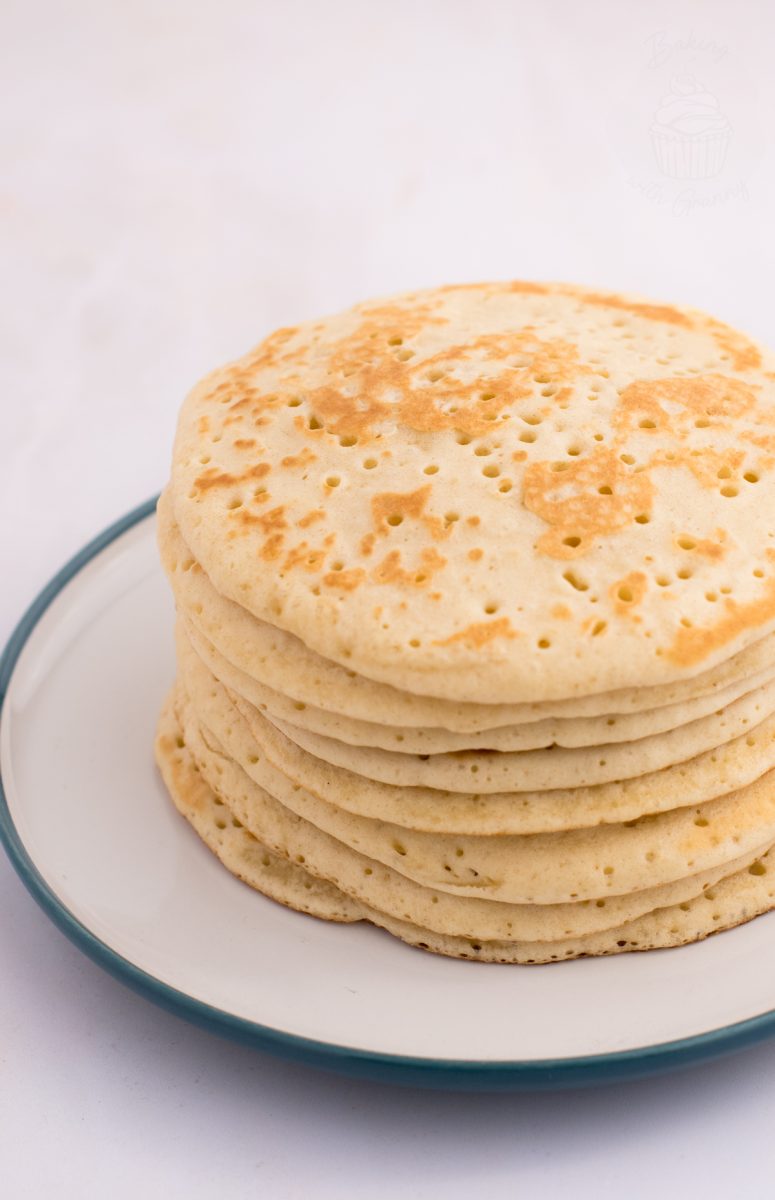
I’m really excited to share this recipe! It’s early 2025, and I am sharing these Scottish Crumpets as the first sneak-peak of one of my brand new recipes, which will feature in my upcoming debut cookbook – Scottish Bakes.
As the title probably gives away, it will be a book of traditional Scottish baking recipes, which of course means traditional Scottish Crumpets had to be included.
This is one of these recipes that has always featured in the Baking with Granny households. They are a firm favourite of Papas, and one Granny would often whip together for a special breakfast, or a teatime treat. In fact, it’s one of those recipes I probably should have shared a long time ago; the only problem is that whenever I make them, they are eaten before I even get a chance to photograph them!
Understandably so. Like any good Scottish Crumpet, these are super soft, with the instantly recognisable holey texture and golden brown hue. They are just the right amount of sweet, perfect for topping with butter, jam or a drizzle of Golden Syrup.
If you are a fan of my Scotch Pancakes recipe, I can guarantee you will love this Scottish Crumpets recipe too. Also, they are much nicer than the Aldi Scottish Crumpets, which, although good, are nowhere near as delicious as one of these – still warm, straight from the pan!
Oh, and Shrove Tuesday is coming up, so why not mix things up and have a Scottish Crumpets Day, instead of the usual Pancake Day?
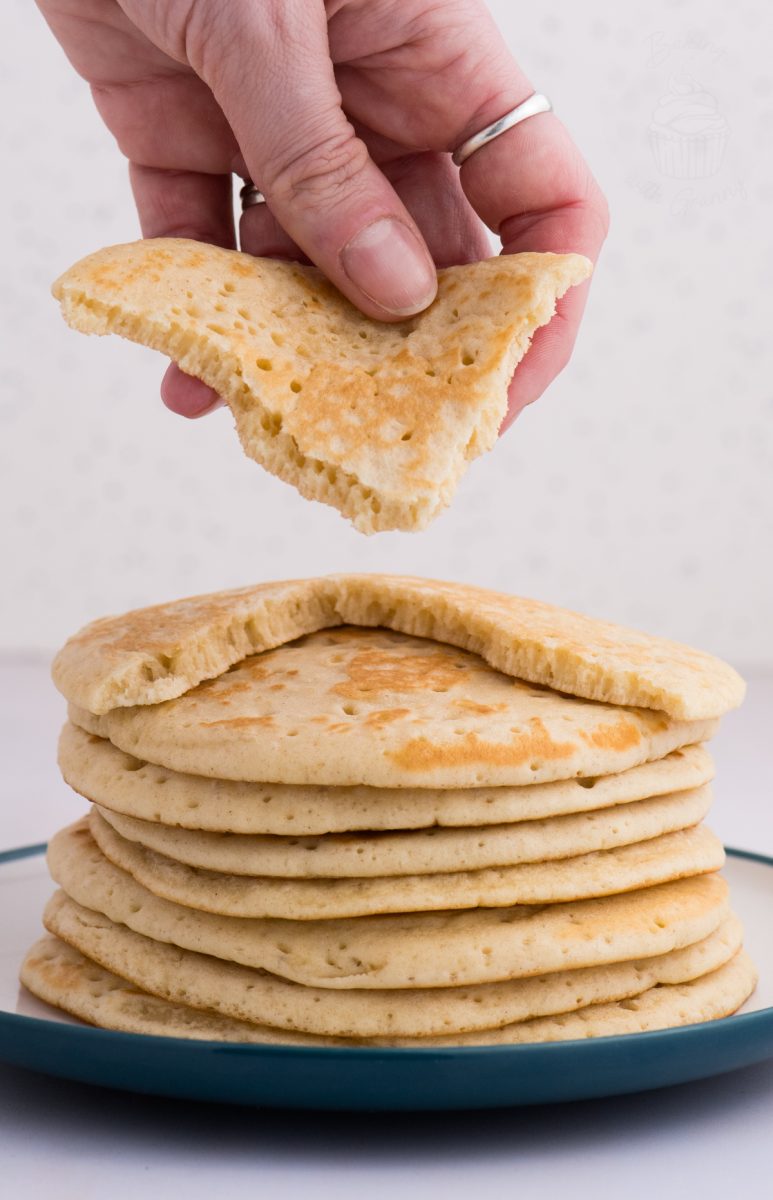
Ingredients for Scottish Crumpets:
Self-raising Flour
Flour makes up the base of your crumpet batter, and we want self-raising as it contains the raising agents required to create those lovely little bubbles that make Scottish Crumpets what they are.
Just be sure to use self-raising flour that is well within its best-before date – there’s nothing more disappointing than hole-less crumpets, because the raising agent has passed its best.
Salt (just a pinch)
A little salt goes a long way in enhancing the flavour of your crumpets and helping to balance out the sweetness, too.
Caster Sugar
Crumpets are definitely a sweet teatime treat, and caster sugar is the best choice of sweetener in this recipe. The finer texture of caster sugar lends itself nicely to the batter mixture, but you could use granulated sugar in a pinch.
Free-range Egg
Using an egg in your crumpet mix works as a binder to bring the batter together.
Always try to opt for free-range eggs when possible.
Milk
Scottish Crumpet batter is quite a thin batter, particularly when compared to a traditional English crumpet. You want enough milk to make it just pourable, but not so thin a batter that it can’t form those iconic bubbly holes.
Traditionally, you would use dairy milk, but I like to swap out for soya milk too.
Vegetable Oil
Adding a smidgen of oil helps keep your crumpets nice and moist, particularly when you aren’t planning to eat them all right away.
Raisins
You might be wondering where the raisins are in the photos… They are technically optional, but some may argue (ie, Papa) that they are indeed essential. Adding raisins is personal preference, though, and you could even get creative and add whatever other additions you may fancy – be creative!
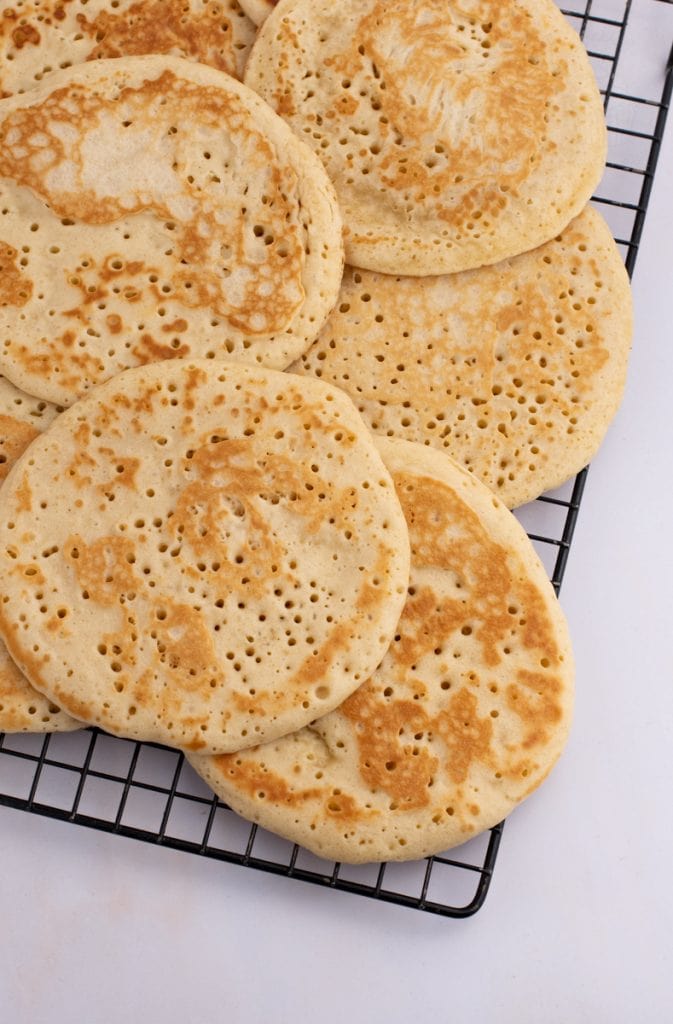
Top Tips for Scottish Crumpets:
• If you don’t have self-raising flour, don’t worry. Simply use plain flour and add some baking powder. The general rule of thumb is to use 1.5 teaspoon of baking powder per 125g of plain flour. So for this recipe you would need 4 teaspoons of baking powder for the 335g of flour.
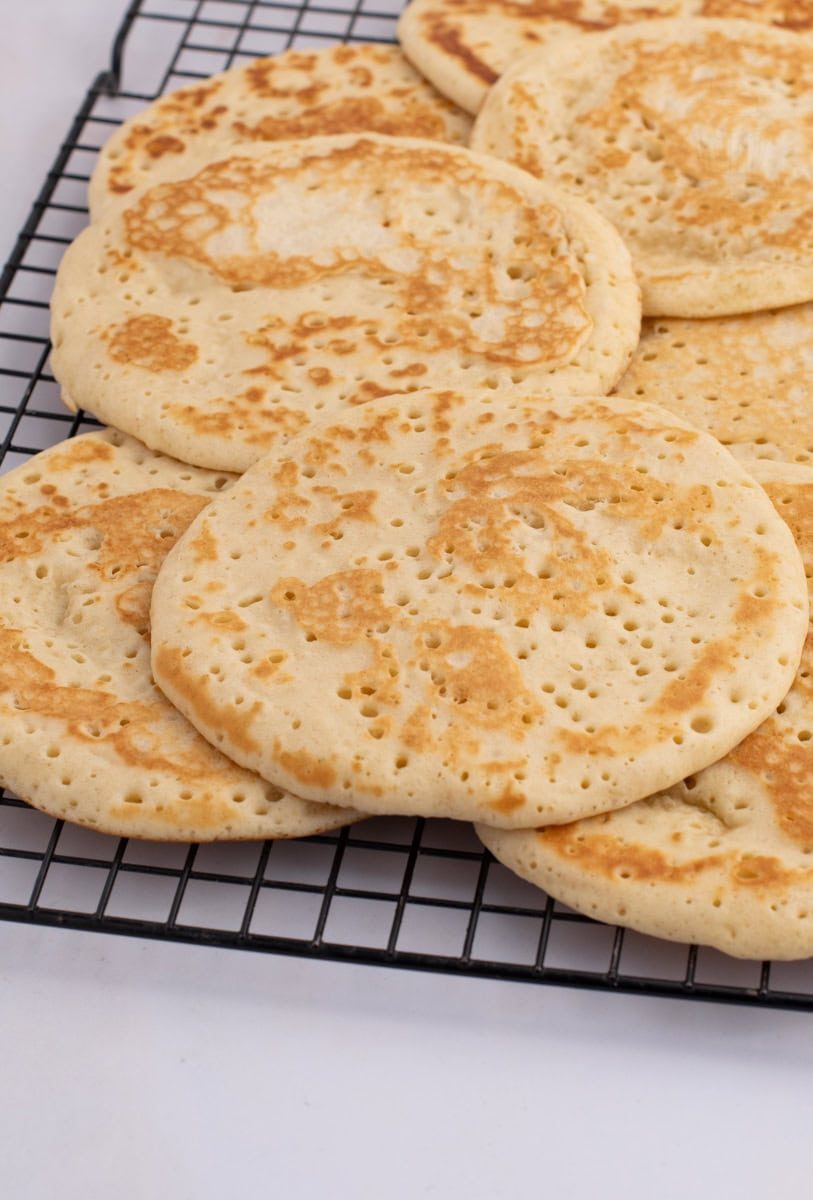
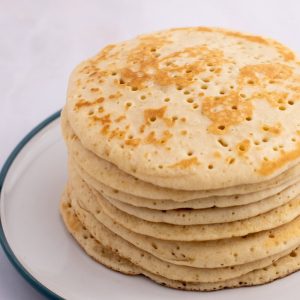
Scottish Crumpets
EQUIPMENT
- Girdle or Frying Pan
INGREDIENTS
- 335 g Self-raising Flour
- 1 pinch Salt
- 120 g Caster Sugar (Superfine Sugar)
- 1 Free-range Egg
- 380 ml Milk
- 50 ml Vegetable Oil
- 50 g Raisins (optional)
INSTRUCTIONS
- Place your girdle/frying pan on a low-medium heat to start warming up.
- In a large bowl, sift the flour, salt & sugar.
- Whisk the milk & egg together in a separate small bowl. Gradually add them to the dry ingredients whilst mixing together. Once combined, add the oil and mix again until just combined.
- Grease your pre-heated girdle/frying pan with a little oil. Spoon a ladle of batter onto the girdle/frying pan. Sprinkle with some raisins, if desired (optional). You may be able to do a couple of crumpets at once, depending on the size of your girdle/frying pan.
- Once the bubbles have started to pop on top of your crumpet, and they appear dry, it’s time to flip them. Using a spatula, flip the crumpets & cook the other side for around 1-2 minutes, or until golden brown.
- Remove from the heat and place onto a wire rack to cool. Repeat with the remaining batter. Allow to cool completely, or enjoy whilst still slightly warm.
IMPORTANT NOTE:
All my recipes are developed using a digital scale and the metric system (grams and millilitres). Cup measurements are available as a conversion but these, unfortunately, won’t always be as accurate. For best results, I always recommend baking with a digital scale.
RECIPE NOTES:
- For full explanations of each ingredient – including possible substitutions – see the Ingredients section above.
- For more tips for success, see Granny’s Top Tips section above.
- Although Scottish Crumpets are best enjoyed on the day you make them, they can be kept for a few days when stored in an airtight container or sandwich bag. To bring them back to life, you can also pop them in the toaster to re-heat them.
- You can freeze Scottish Crumpets. Simply pop them into a sandwich bag, with a square of greaseproof paper between each crumpet. Allow them to fully defrost before eating.
Scottish Crumpets are griddled pancakes, somewhat similar to Drop Scones, but with a light, spongy texture and an instantly recognisable holey surface. They are traditionally made on a girdle (but a frying pan also works well) and are cooked on both sides until golden brown, with a soft, bubbly interior and slightly crisp edges. They are quick to make and best enjoyed warm, served with butter, jam, or Golden Syrup.
To make Scottish crumpets, you start by heating a girdle or frying pan, whilst mixing self-raising flour, salt & sugar in a bowl. Next, you whisk together milk & an egg before adding them to the dry ingredients and stirring in a little oil to bring the batter together. You’ll lightly grease the pan, then ladle in the batter, sprinkling raisins on top, if using. When bubbles start to form & pop on the crumpet, flip and cook the other side until golden brown.
Unlike the traditional English crumpets, which are small and thick, Scottish crumpets are thinner, softer, larger and made with self-raising flour instead of yeast.
They’re cooked on both sides, giving them a smooth, golden-brown surface, dotted with little bubbly holes. The result is a light, spongy pancake-like texture – somewhere between a traditional English crumpet, and a Scotch Pancake.
Scottish Crumpets are often made with some raisins mixed into the batter too.



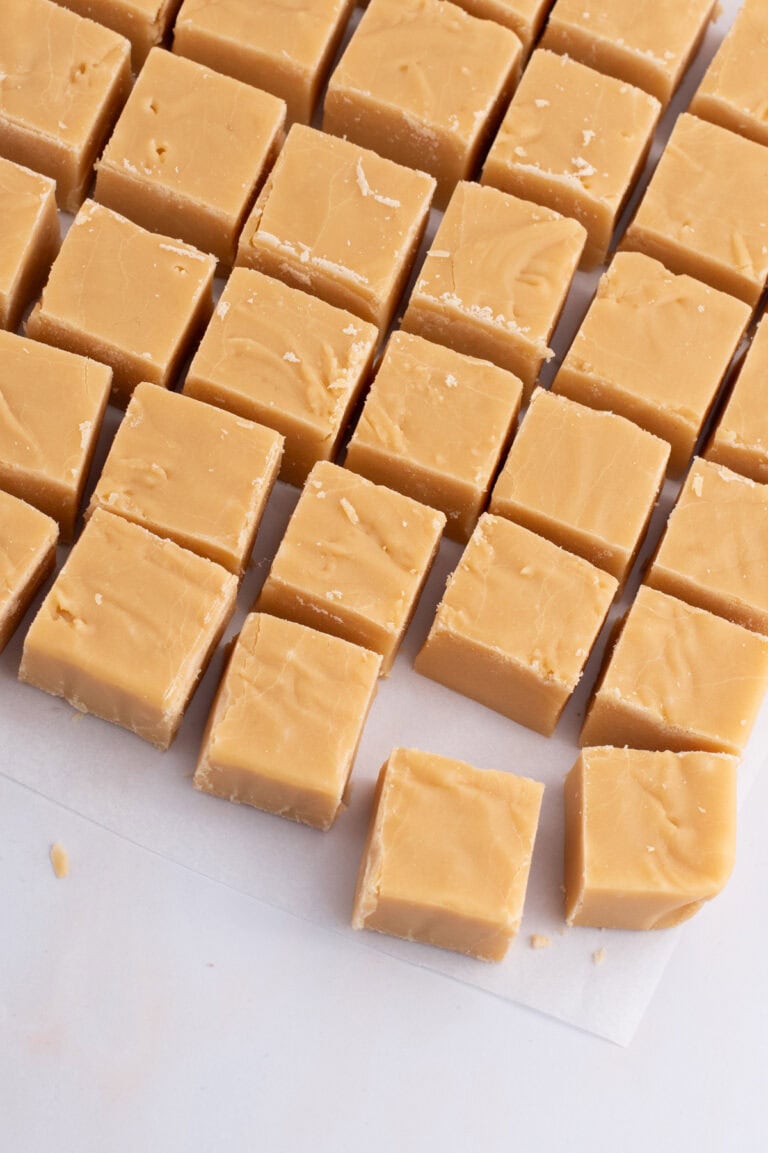



So excited to find a nice simple recipe for Scottish crumpets as I have never attempted at home before.
I just found this recipe in your new book. Simple easy to follow recipe and they come out very tasty!
Only thing is I feel mines are more pancake? Maybe a bit puffy and not getting the little wholes? Any advice were I am going wrong?
As usual all these recipes are brilliant. Had these today and maybe tomorrow again
Just checking it is definitely 120g of caster sugar? Sorry just checking as it’s a lot more than would go in a normal crumpet. Thanks!